
"The world may change, but it keeps on turning."
- Jeff Klinkenberg
The Public Art at Julian B. Lane Riverfront Parks is engaging, thoughtful, and recognizes the foundations of the past. Below is an overview of the sculptures, mosaics, and paintings in the park where you can learn more about the approach to the art. Additionally, the project has a literary component told from the perspective of Tampa's own award-winning author, Jeff Klinkenberg. We invite you to read his essay "Ghosts" and explore the folklore and history of Robert's City. Learn more about the park amenities!
Ripple Gates by Thomas Sayre¶
Large gateway pylons welcome visitors to Julian B. Lane Riverfront Park. There are two groupings of these large pylons; three greet visitors arriving at the River Center and two bid welcome at the south entrance. Each pylon stands at nearly 34’ high and has a monumental presence. Smaller pylons can also be found in the park at key intersections or park features.
This artwork was inspired by Tampa residents’ long history and engagement with the Hillsborough River. The massive cast concrete pylons are similar to the adjacent bridges and bulkheads along the river’s edge. With the playful stainless “ripple” assembly atop the pylon, the art connects to the contemporary recreational uses of the sparkling river surface. www.thomassayre.com
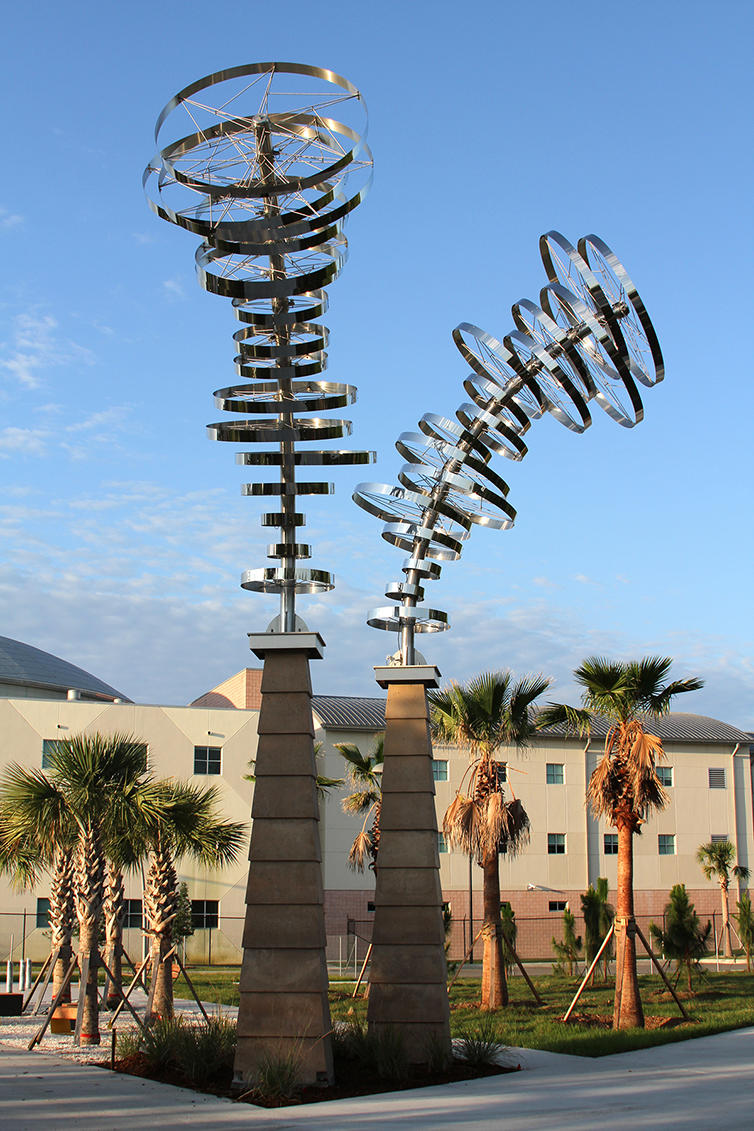
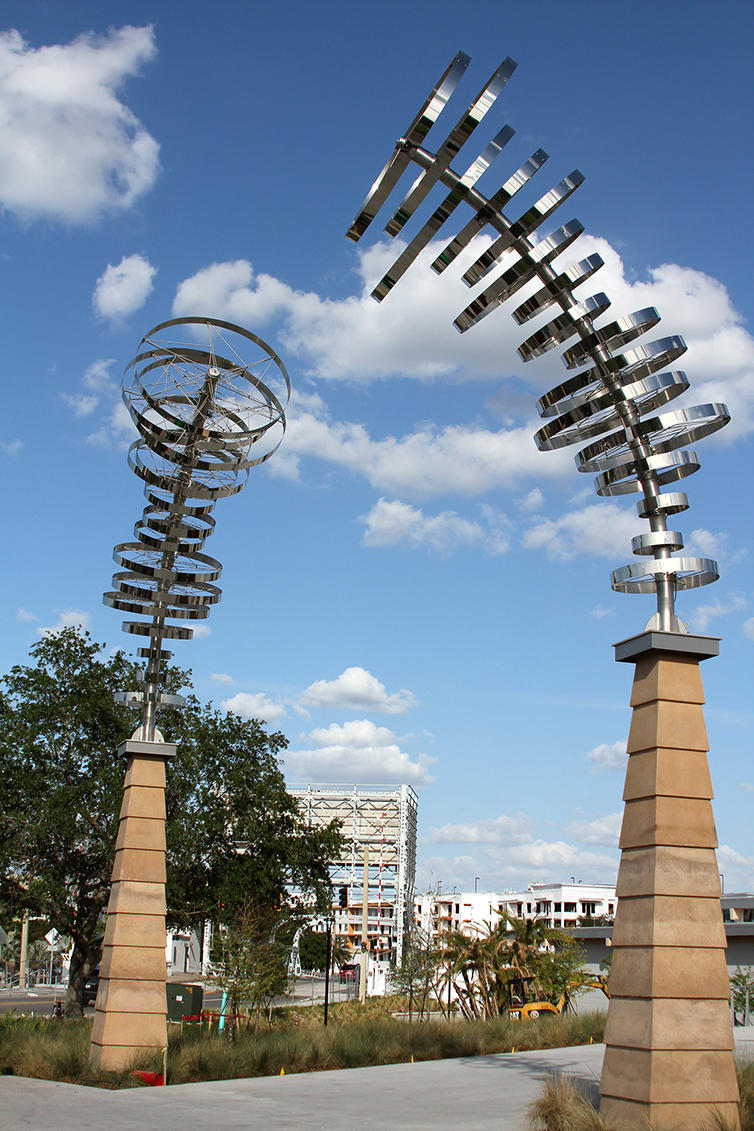
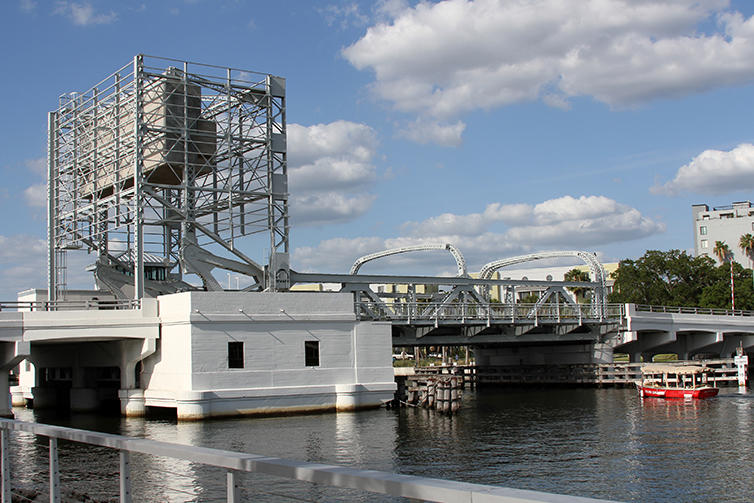
Gateway Sculptures inspired by nearby bridge and ripple effect in Hillsborough River
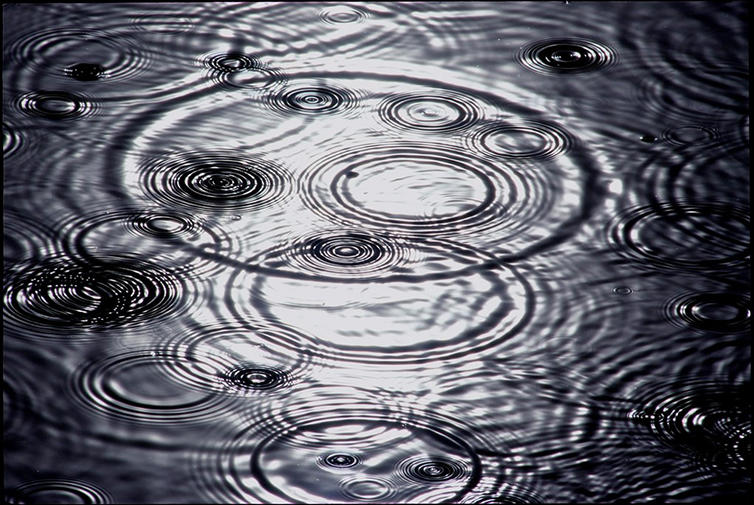
West Tampa Promenade by Jovi Schnell¶
This space is a tribute to the area’s vibrant and culturally diverse history. Informed by the past, the mosaic, ceramic bench medallions, and traditional plaza tiles provide a connection from what was, an enduring promise by the City of Tampa for an open and inviting public space, sports, recreation, and entertainment. www.jovischnell.com
The Cement Tile
Colorful, encaustic cement tiles were introduced to Tampa Bay by Spanish-speaking immigrant artisans and our neighbors to the south. The plaza tiles recall the typical design patterns found in the area and are directly inspired by the cigar labels of The F. Garcia & Company Factory. The cigar factory was built in 1899 on the corner of Garcia Avenue and Arch Street. It is in an area now within the boundaries of the park and was a primary employer for area residents. This section of town was known as Roberts City.
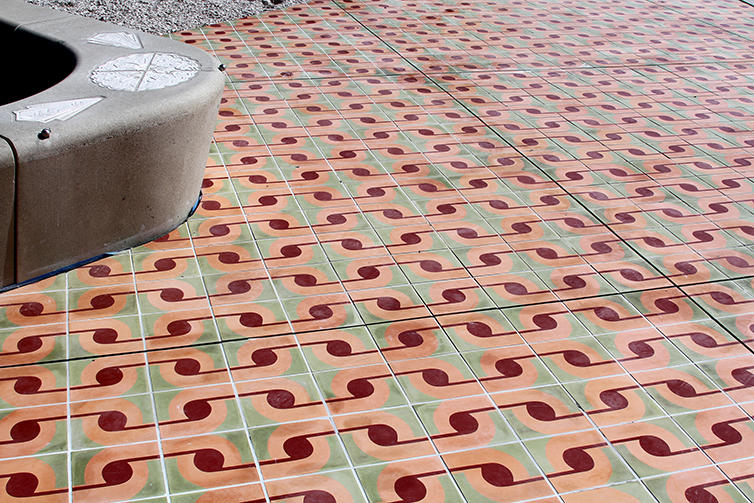
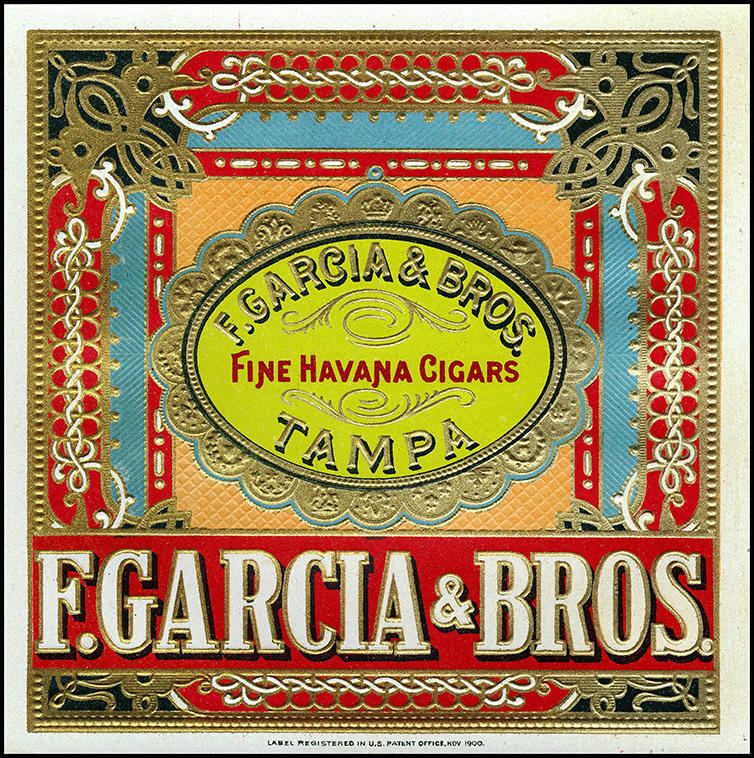
Cigar Label courtesy of USF Special Collections inspired tile design
Mural
The tile mural located on the restroom building in the center of the park celebrates the park's focus on waterfront activity while paying homage to Roberts City and the family-run fishing industries such as Matassini Fish Company that caught Trout, Mullet, Pompano, Perch, Sheepshead, Grouper, Red Snapper, and Blue Crab. The mermaid figure establishes a larger macrocosm in the mural as her symbolism doubles as a good luck charm of prosperity and protection traveling on all waters and granting safe passage.
The inspiration for this mermaid comes from the African Goddess of the waters, Yemaya, who is often depicted as a mermaid. Yemaya is the “Mother whose children are the fish, the Mother of All.” Her realm is the top layer of the ocean, considered to be the womb of life. Without Yemaya, life on earth would not be possible. With her, there is hope. She is a spiritual mother to all who feel lost and lonely. Yemaya enjoys a good time and loves to dance. Her movements reflect the rhythm of the waves.
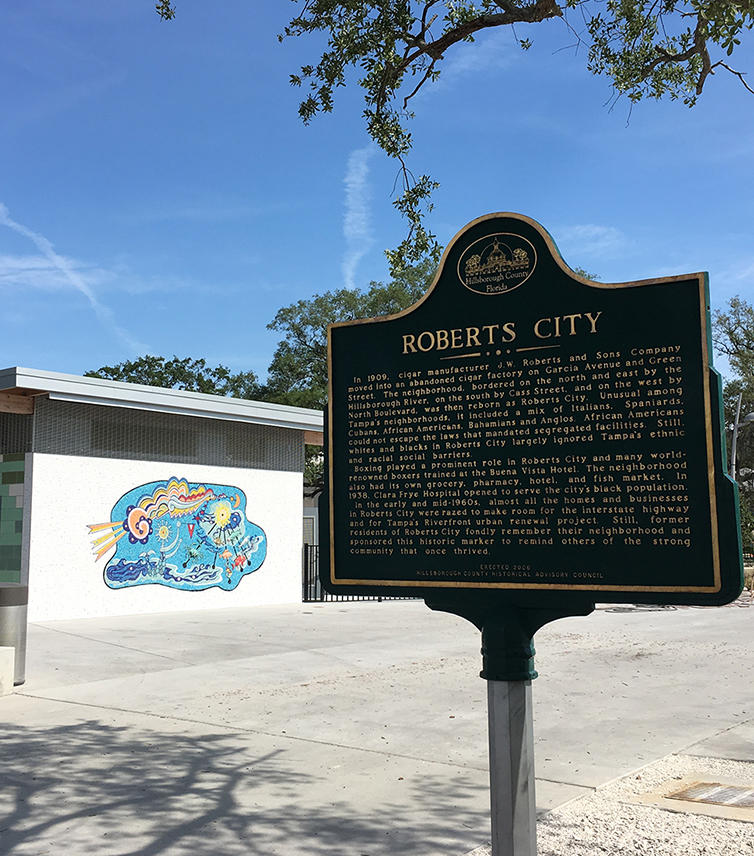
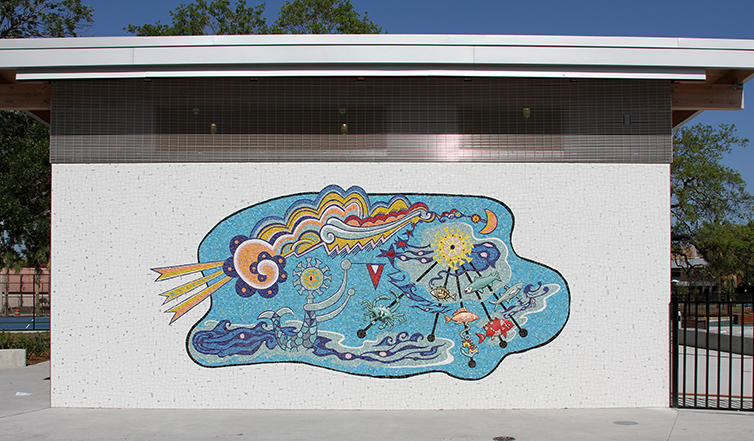
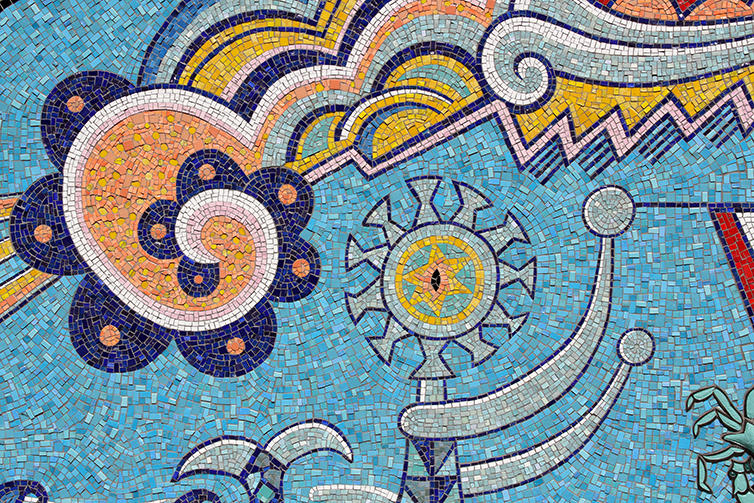
Bench Medallions
White, ceramic medallions are inset on eleven of the surrounding benches. Historical references within the designs of the medallions include The art of the cigar labels found within West Tampa and Roberts City, many of which were embossed and strikingly ornate using official seals, crests, coins, animals, flags, and flourishes. Fortune Taylor, tended orchards of oranges, guavas, and peaches on the eastern shore of the Hillsborough River in the late 1800s. The Fortune Taylor Bridge connected West Tampa with Tampa. References to Phillips Field, social clubs, Café con Leche, and dominoes can also be found.
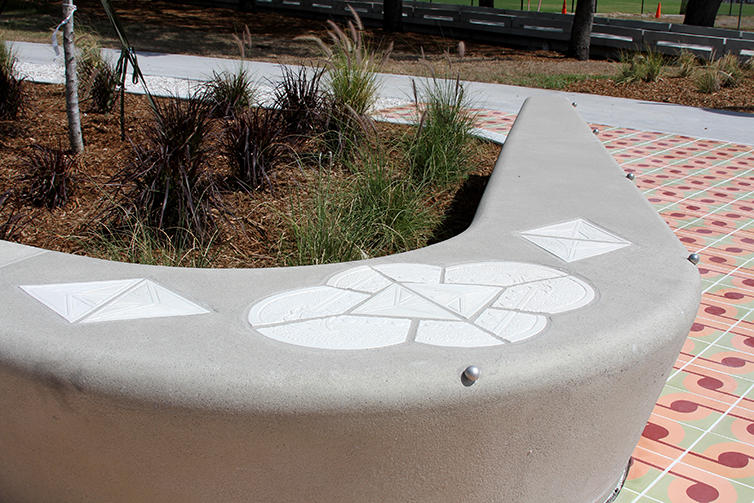
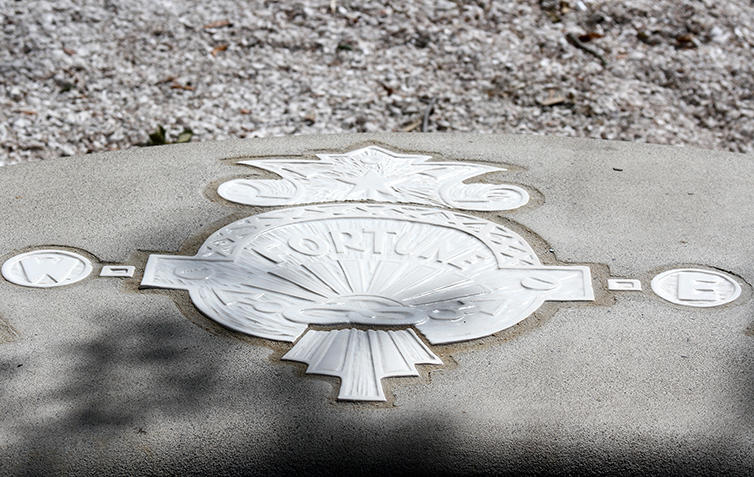
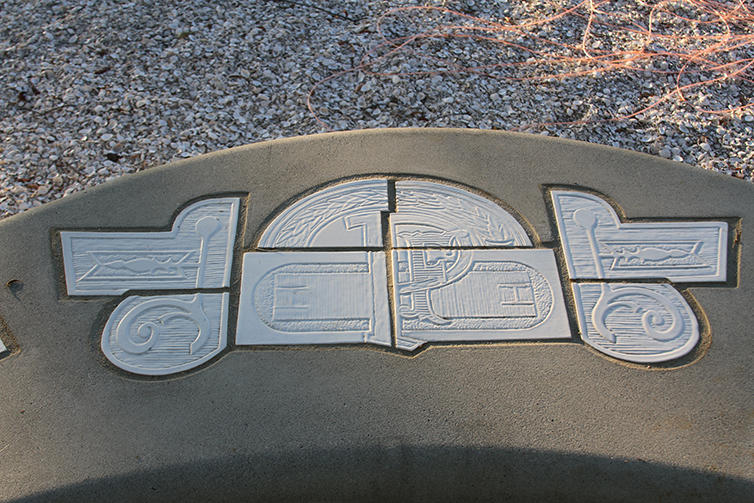 ¶
¶
The Countable and Uncountable Stories of Roberts City by Pep Rally, Inc and Edgar Sanchez Cumbas¶
This artwork is located inside the River Center and is dense with meaning and references to and about Roberts City. Installed at 16' wide and 8' tall, the work is layered with stories shared from the collective memories of former residents and the artists’ own research, and the artwork references an abundance of people, places, and things through imagery or is symbolically referenced. A few of the many individuals represented in this artwork include Fortune Taylor, Fernando Figueredo, Al Lopez, Clara Frye, and Mayor Julian B. Lane. Many places are referenced, including Phillips Field, Matassini Fish Market, and the Hillsborough River. Highlights of other objects or things included are cigar labels, sports items, favorite foods, homes, and bricks. www.peprallyinc.com www.edgarsanchezcumbas.com
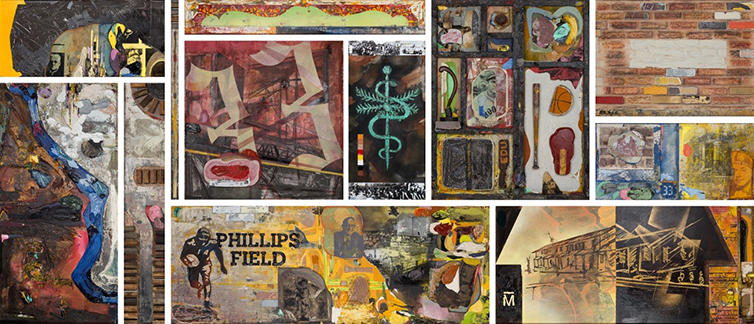
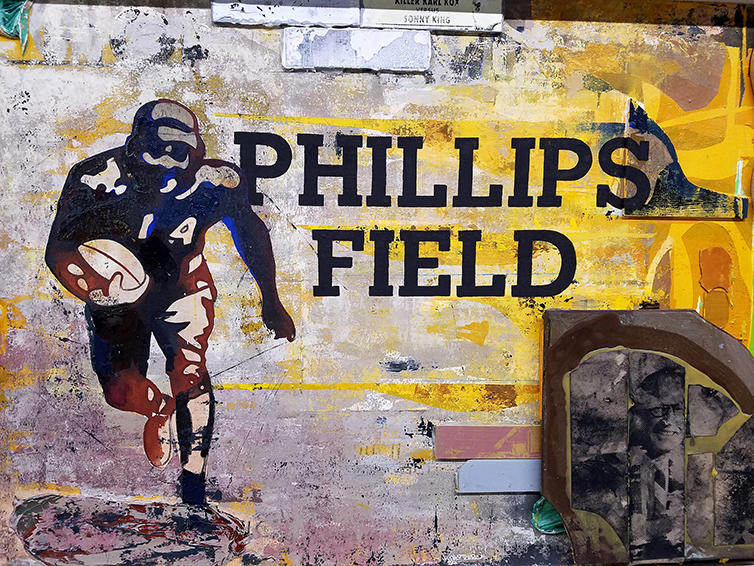
(detail)
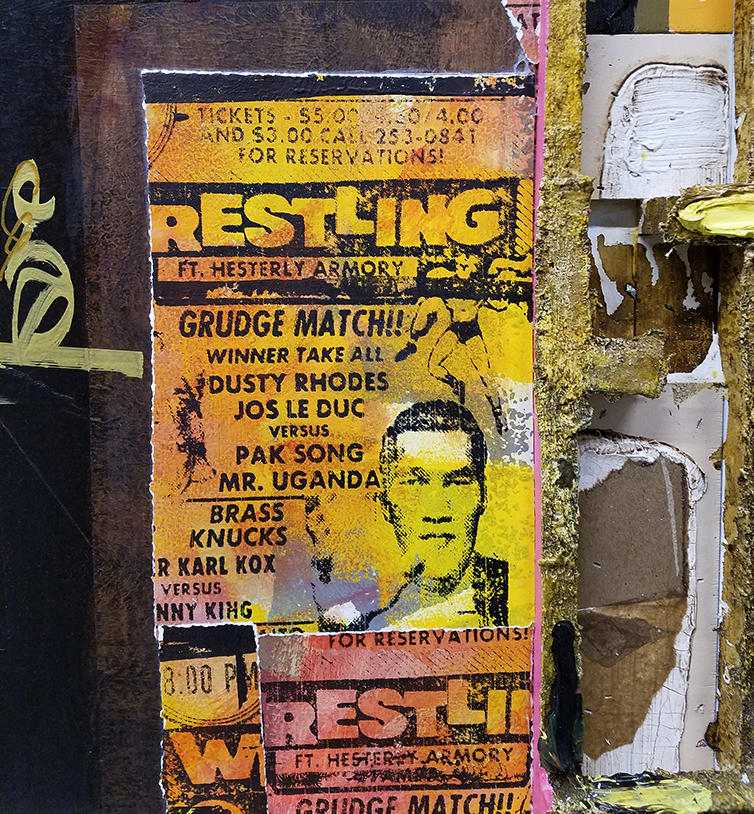
(detail)
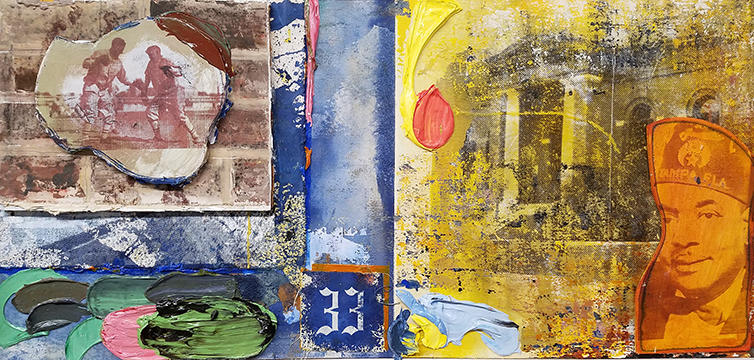
(detail)
Ripple Effect by Pep Rally, Inc.¶
The mural that is located under the Fortune Taylor Bridge has a Ripple Effect, as it seemingly bubbles along the wall, connecting the north and south side of the park. Enjoy the meander, if so inclined, walk across the bridge and enjoy the artwork along the Riverwalk. www.peprallyinc.com
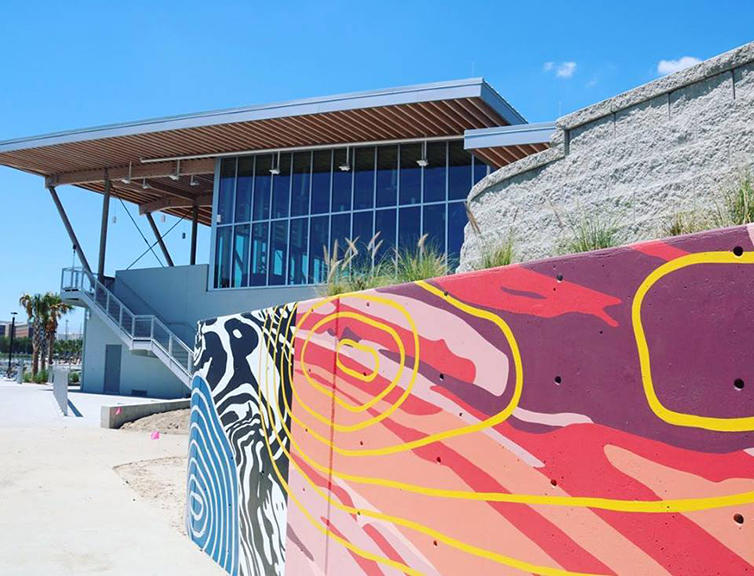
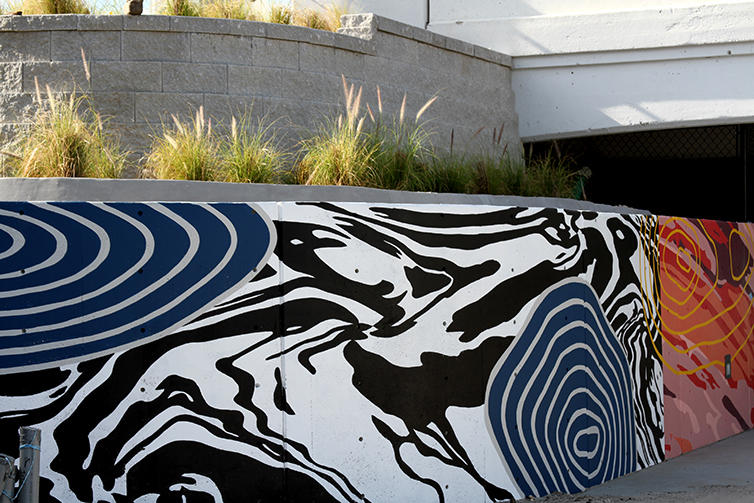
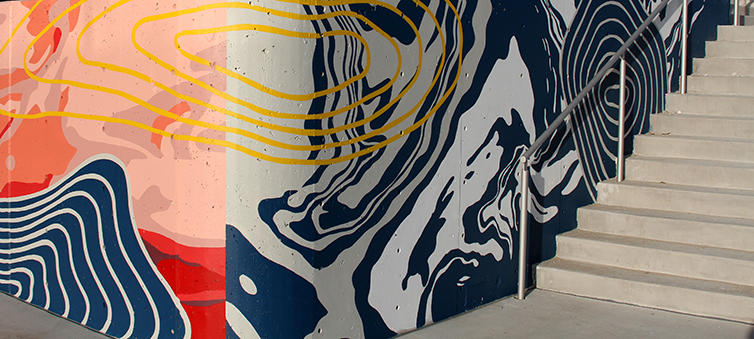
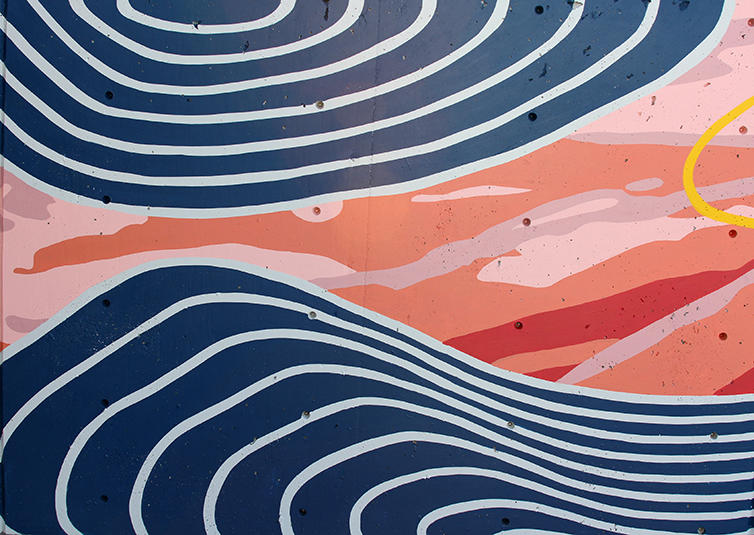
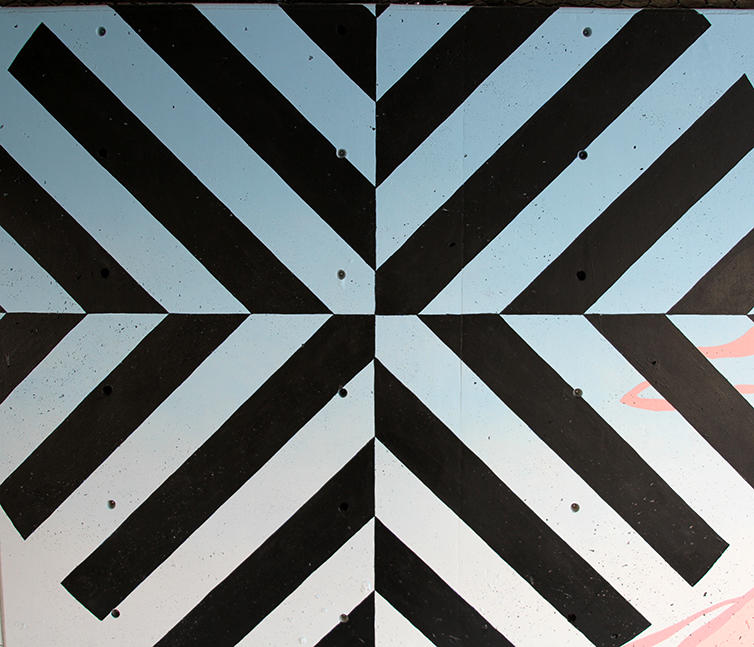
Bat House¶
Bats can be found throughout the City of Tampa. The exterior design of this bat house is by artist Lynn Manos Page and is based on the theory of equal luminescence or equal value. Luminescence is perceived lightness or value. Color and value (luminance) are analyzed in different parts of the brain, which are located several inches away from each other. The background panels are different values of blue and the overlying graphic bats are different values of brown. When the different colors approach equal value or brightness, the brain cannot place the images in space. This gives the graphic bats an eerie quality. The Bat House was built by biologist Steve Barlow, and this shelter can house approximately 4,000 bats. http://www.lynnmanos.com/
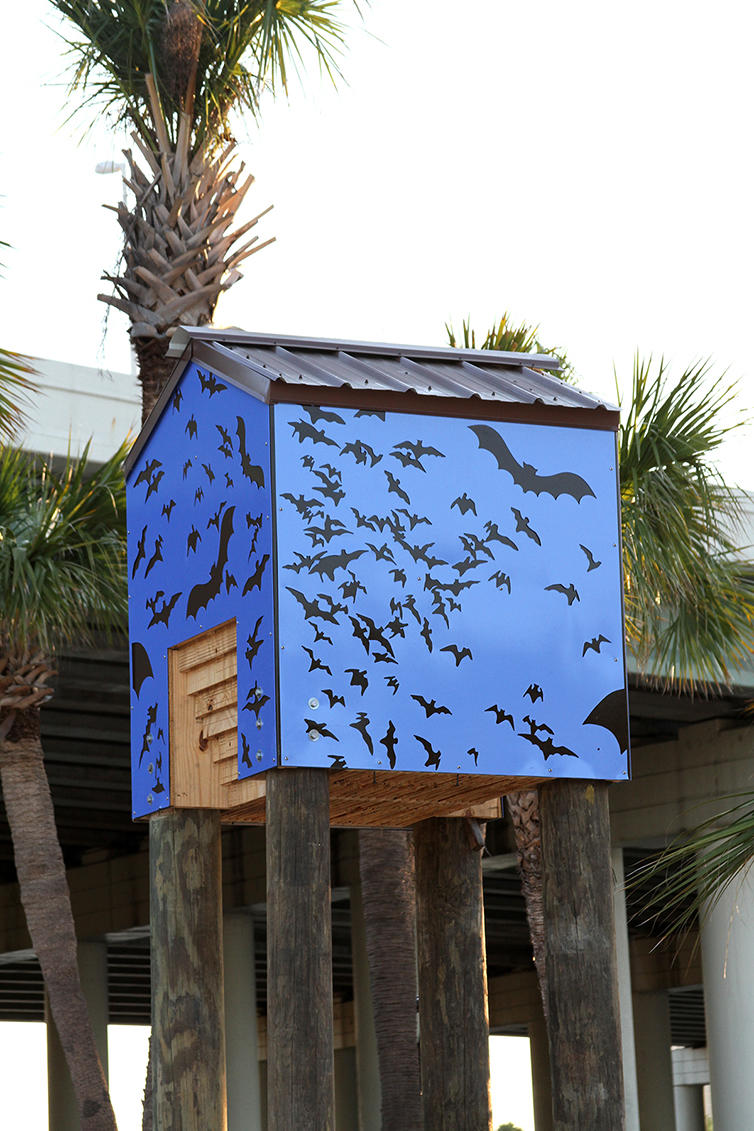
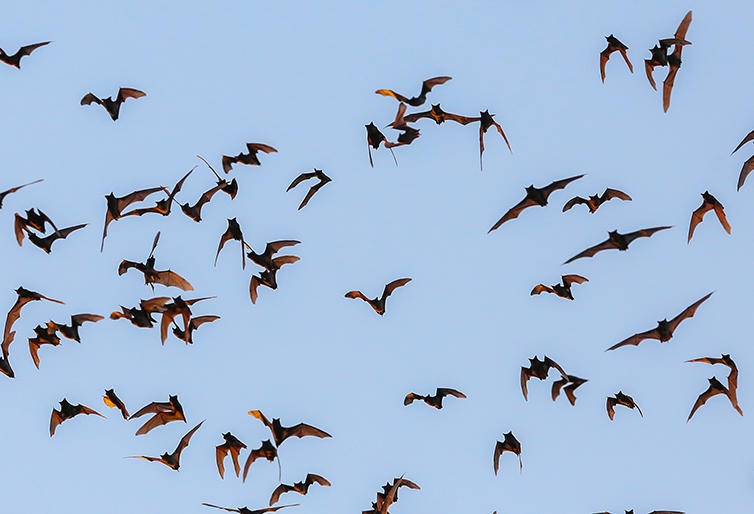
Free Tail Emergence, Photo by Merlin Tuttle's Bat Conservation
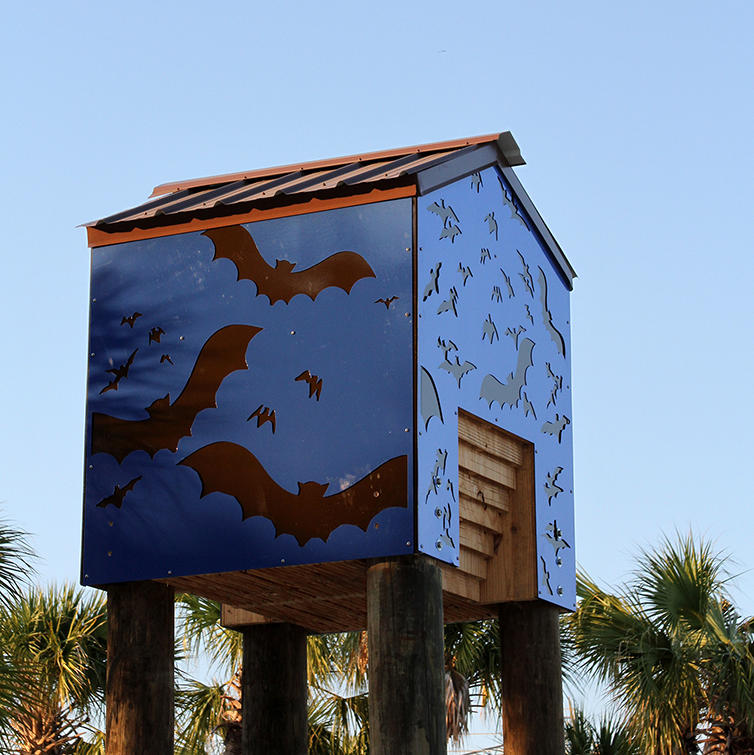
Here are some fun facts about our bat friends!
Brazilian free-tailed bats (Tadarida brasiensis) are the most common bats in the area, though there are others. These bats remain active year-round. They have long, narrow wings that are adapted for fast flight. Aided by tailwinds, thousands of feet above the ground, they can travel at nearly 100 miles/hour. Other interesting facts about these bats are:
- One bat can travel up to 100 miles or more in search of a single night’s food.
- Bats like these save American farmers an estimated 23 billion dollars annually in pest control.
- Mothers consume 70% of their body weight nightly, meaning that at full occupancy bats from this one roost can consume 75 pounds of insects in a single night, including countless pests.
- Each mother bears just one pup per year, hairless and about ¼ her size at birth.
- Like other bats, free-tails rarely bite except in self-defense if handled. If you come across a bat alone or on the ground, do not attempt to handle it.
- Helping bats protect human health by reducing the need for chemical pesticides.
- For more information about these and other bats go to http://www.merlintuttle.org
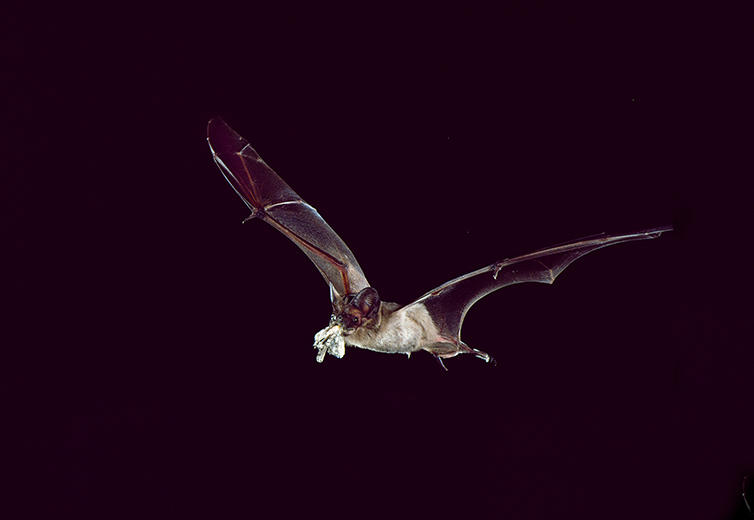
Free Tail Eating Moth. Photo by Merlin Tuttle's Bat Conservation
The Form of Wander - Commissioned by Hillsborough County¶
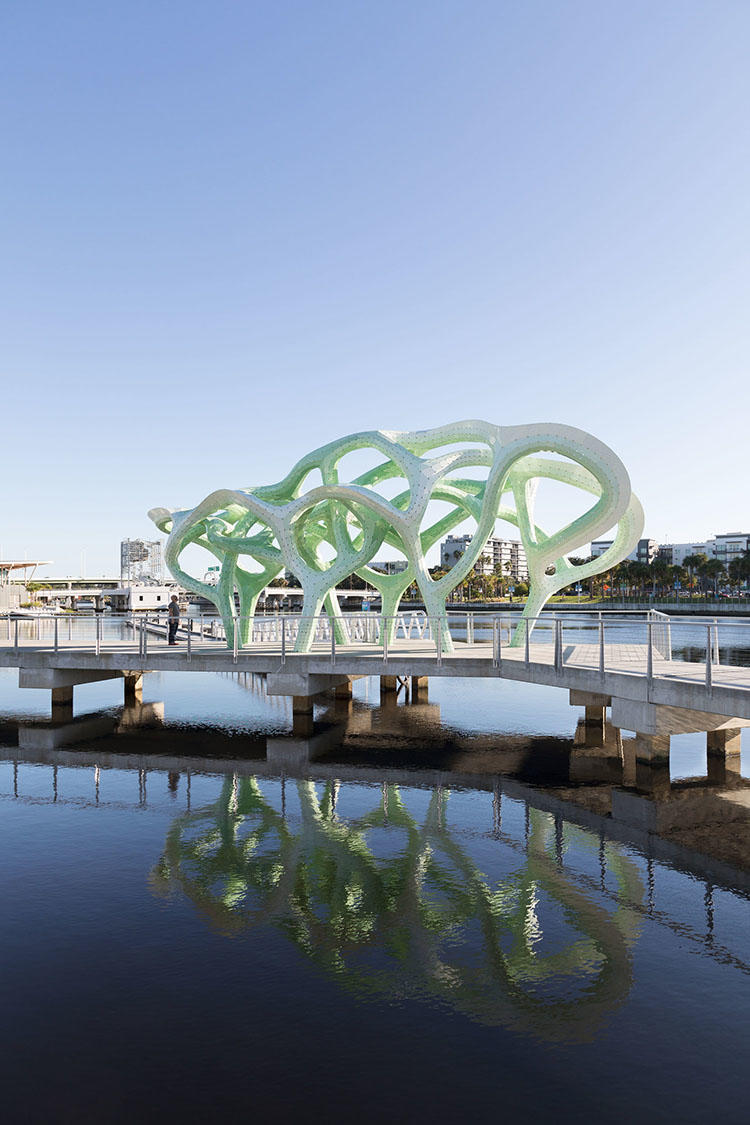
The Form Of Wander by artist Marc Fornes; Photo courtesy The Very Many ©NAARO
This sculpture on the pier at Julian B. Lane Riverfront Park was commissioned by the Hillsborough County Public Art Program, which then worked in conjunction with the City of Tampa to install their sculpture in the park. Artist Marc Fornes and his team at The Very Many, created this sculpture inspired by an oak tree canopy, and the aluminum structure presents a new approach to a shade structure and “photo op” destination. It can also be viewed from across the river as visitors travel along the Riverwalk. Statement from the artist: Seven trunk-like columns straddle this path onto the water, inviting visitors to walk around and through on a winding path. They thrust up into a tangle of branches, not unlike the root structures of mangroves which take root along Florida shorelines. Six greens from “Chatty Cricket” to “Green Whisper” make up a linear gradient applied locally and according to the direction of the topology. Chosen specifically to react to the changing sun, the greens liven to bright green in response to Tampa’s usually sunny weather, without tipping into the yellow spectrum, and appear more pastel on the rarer greyer days. The muted green borrows from a tradition of art deco and art nouveau-era riveted structures.
